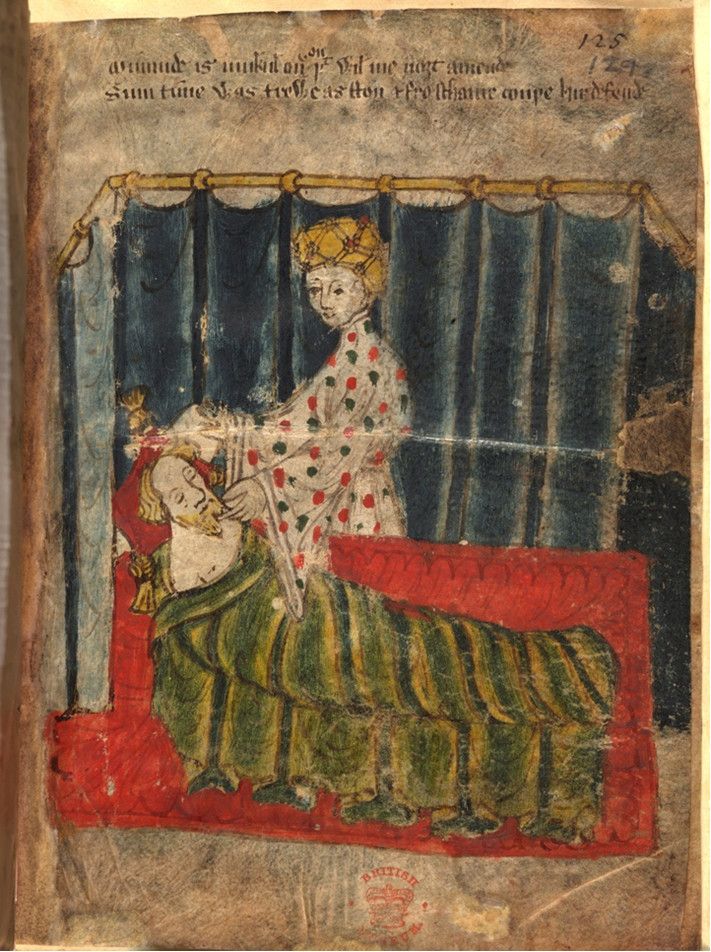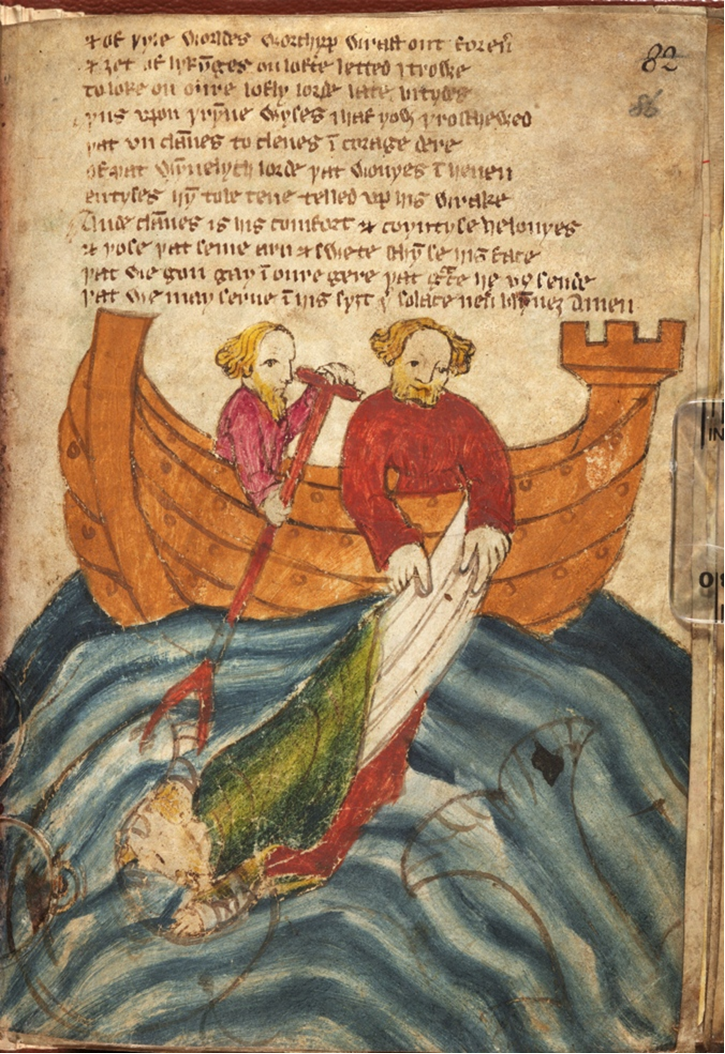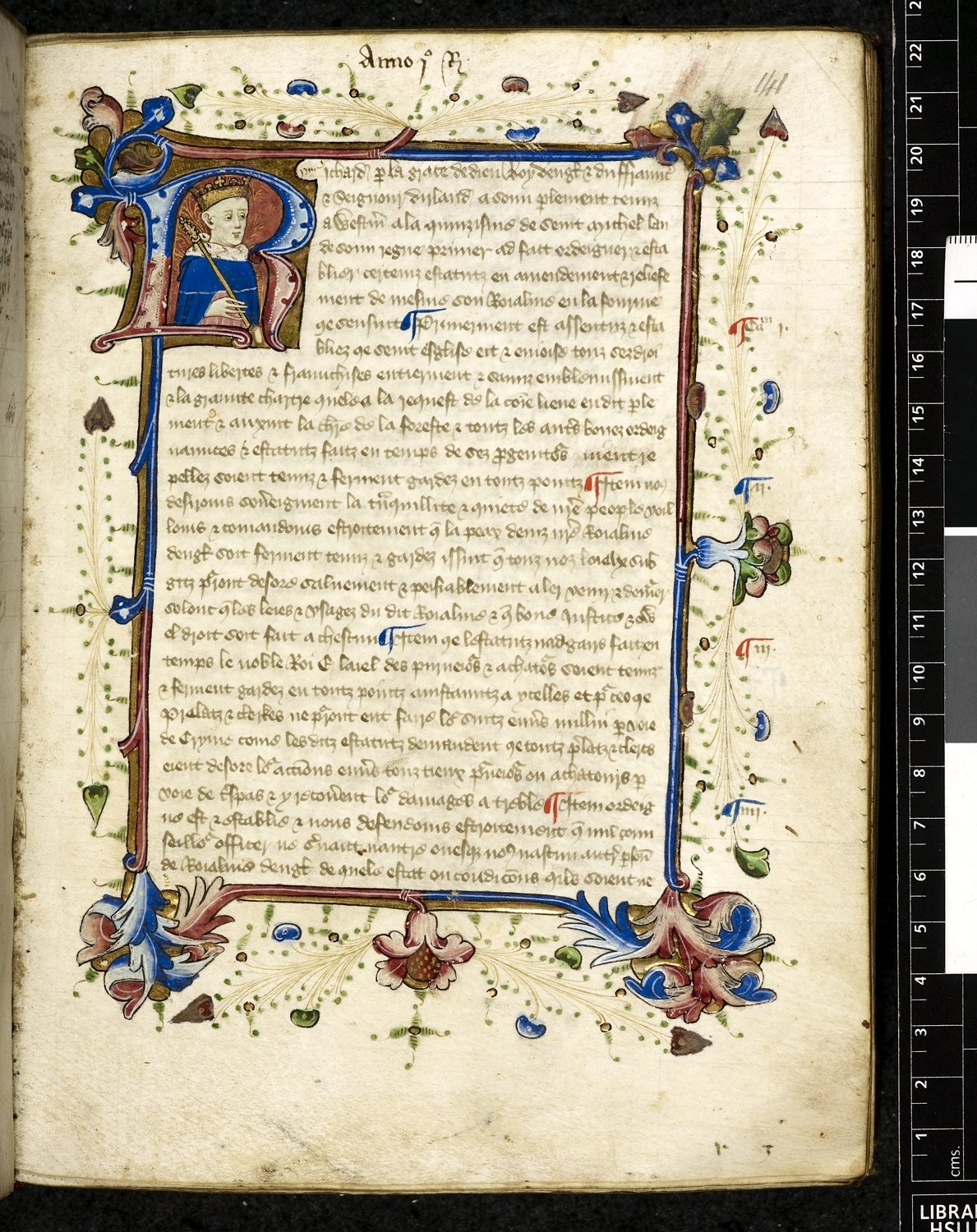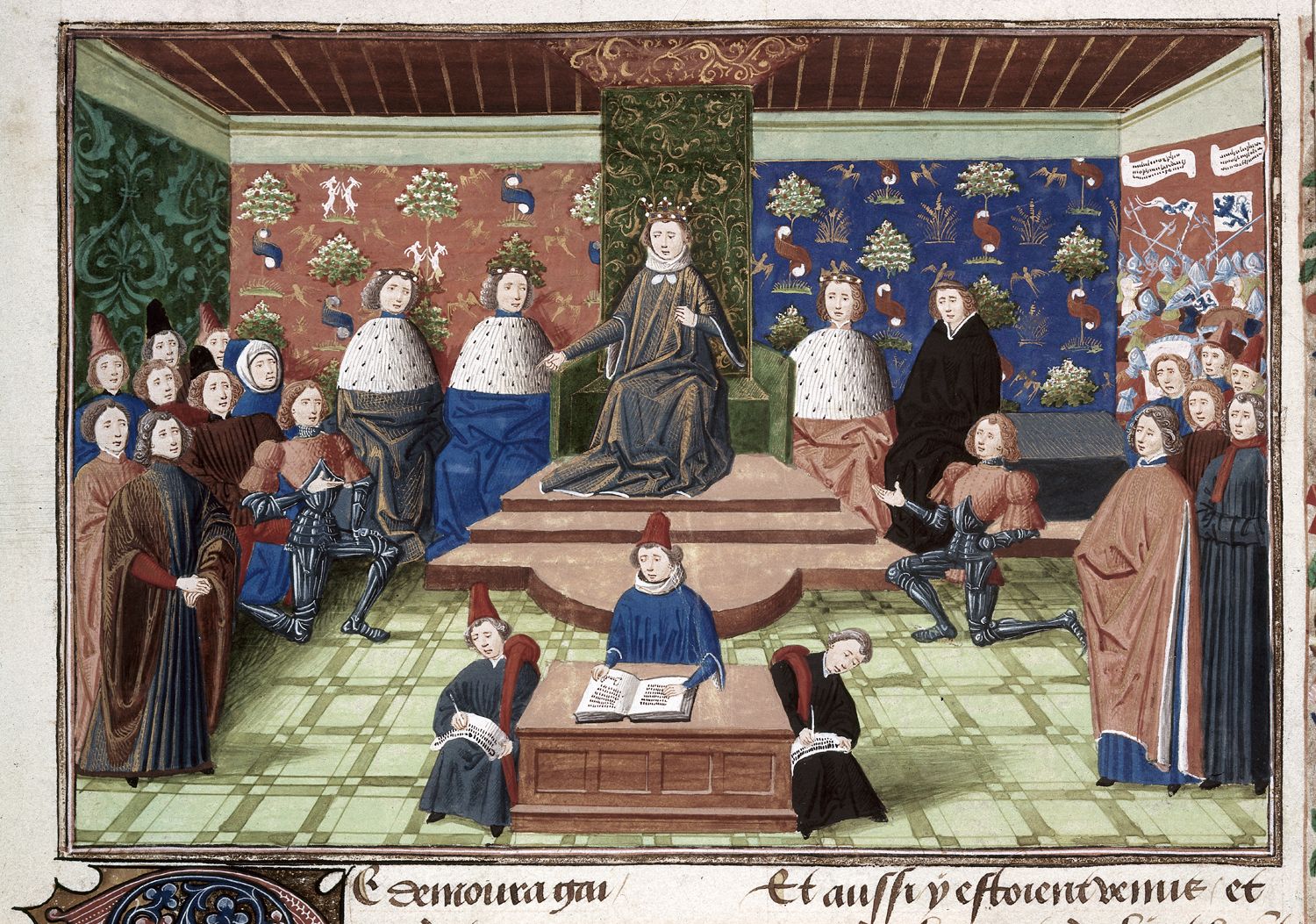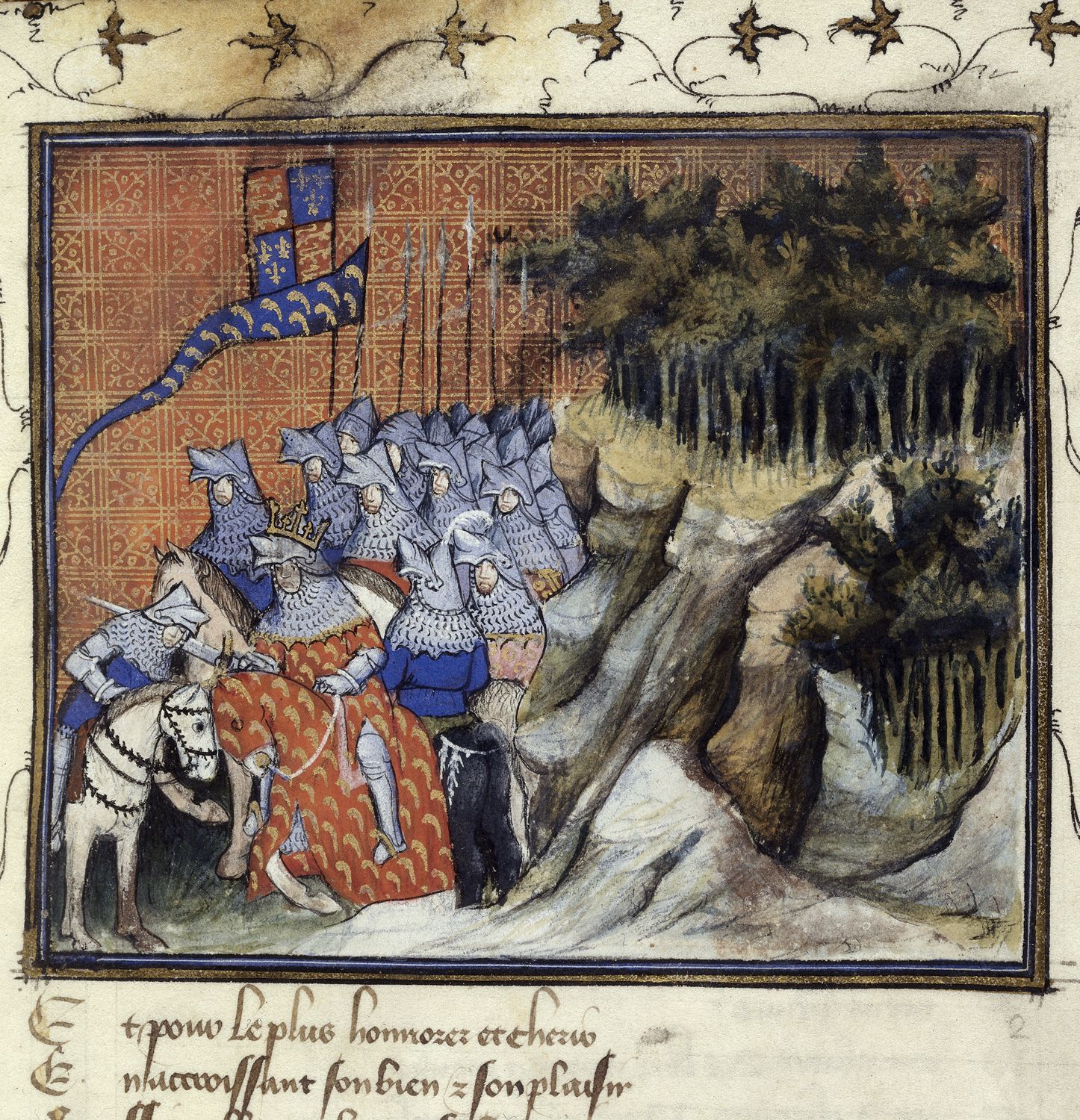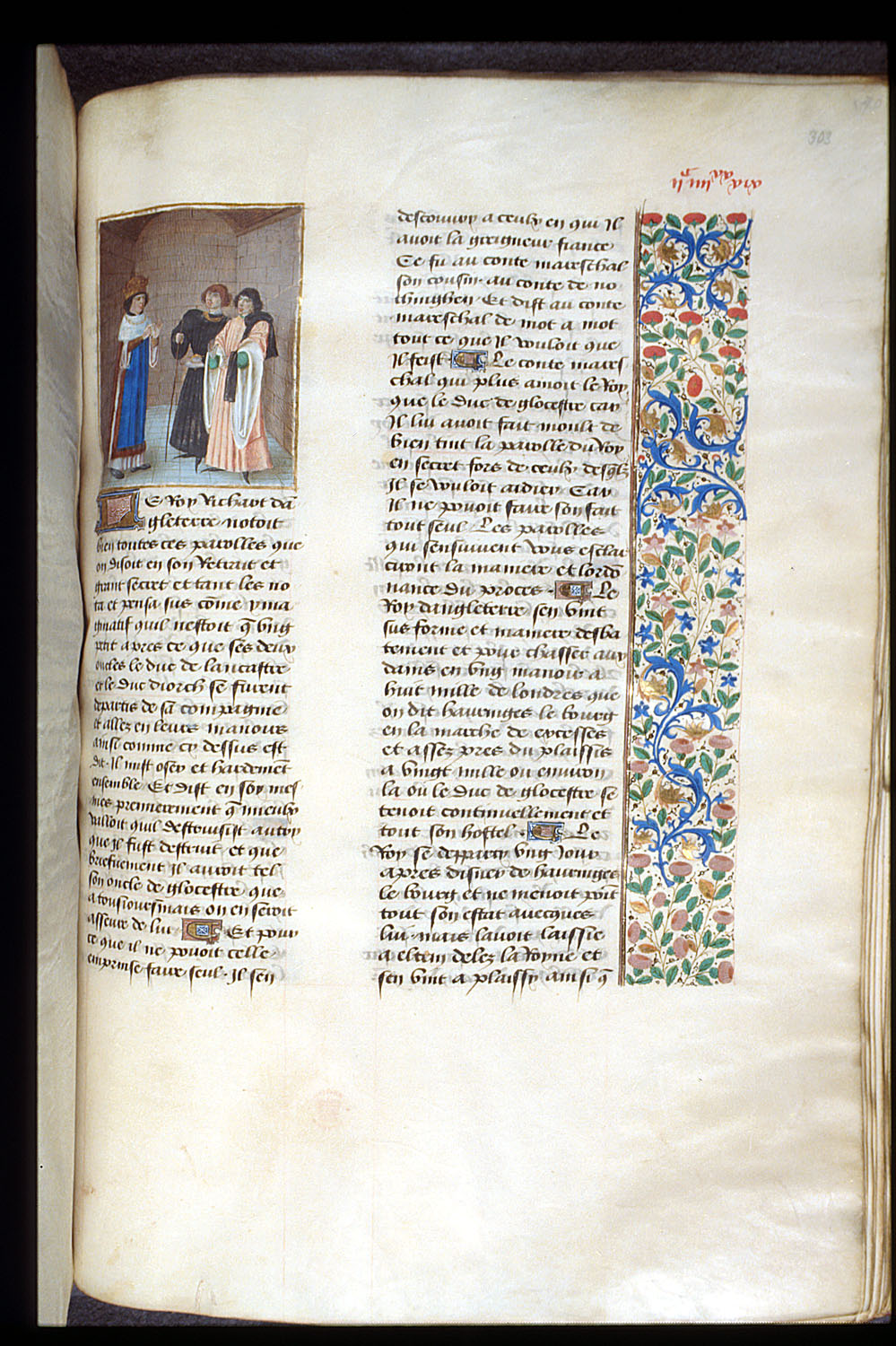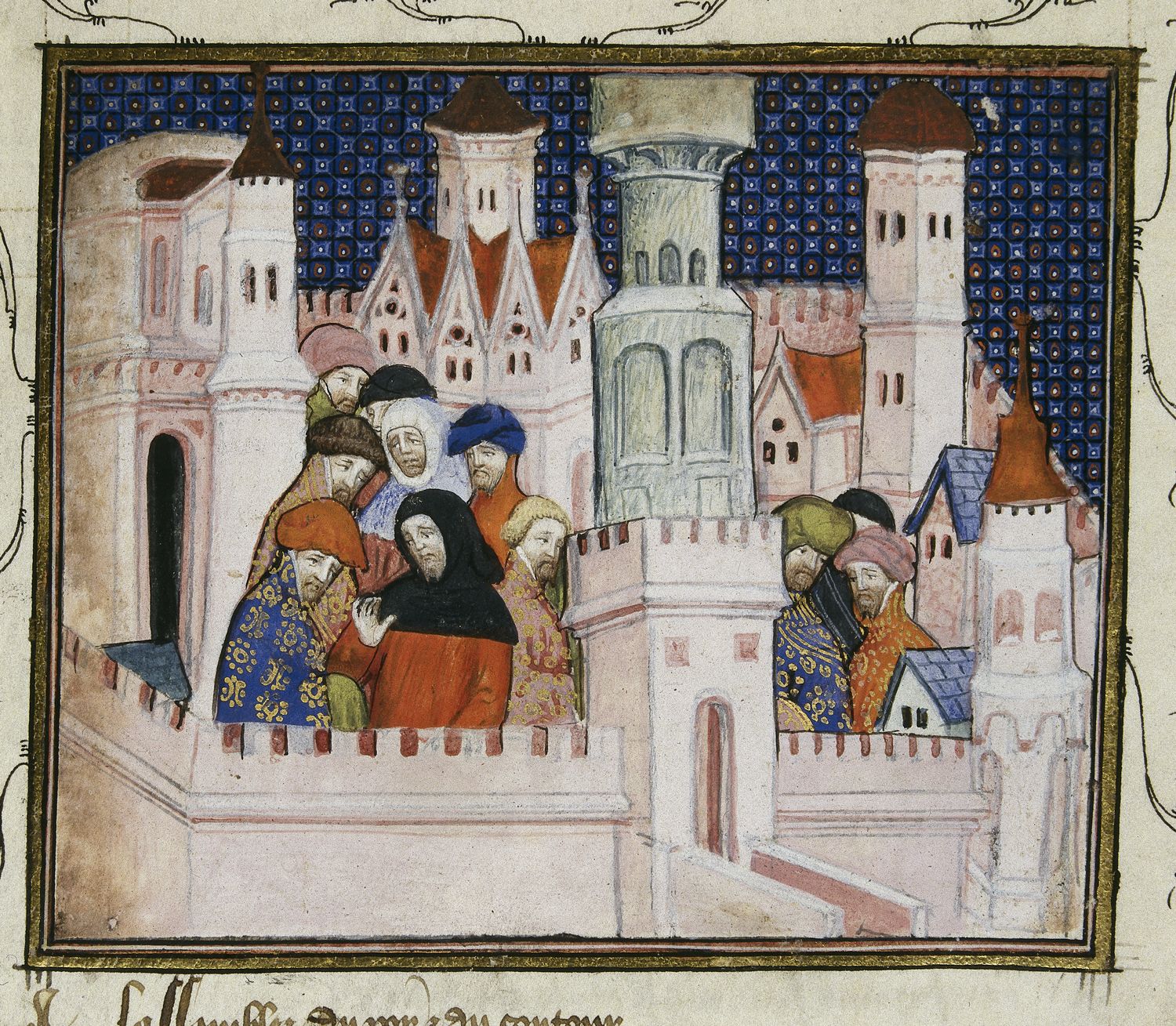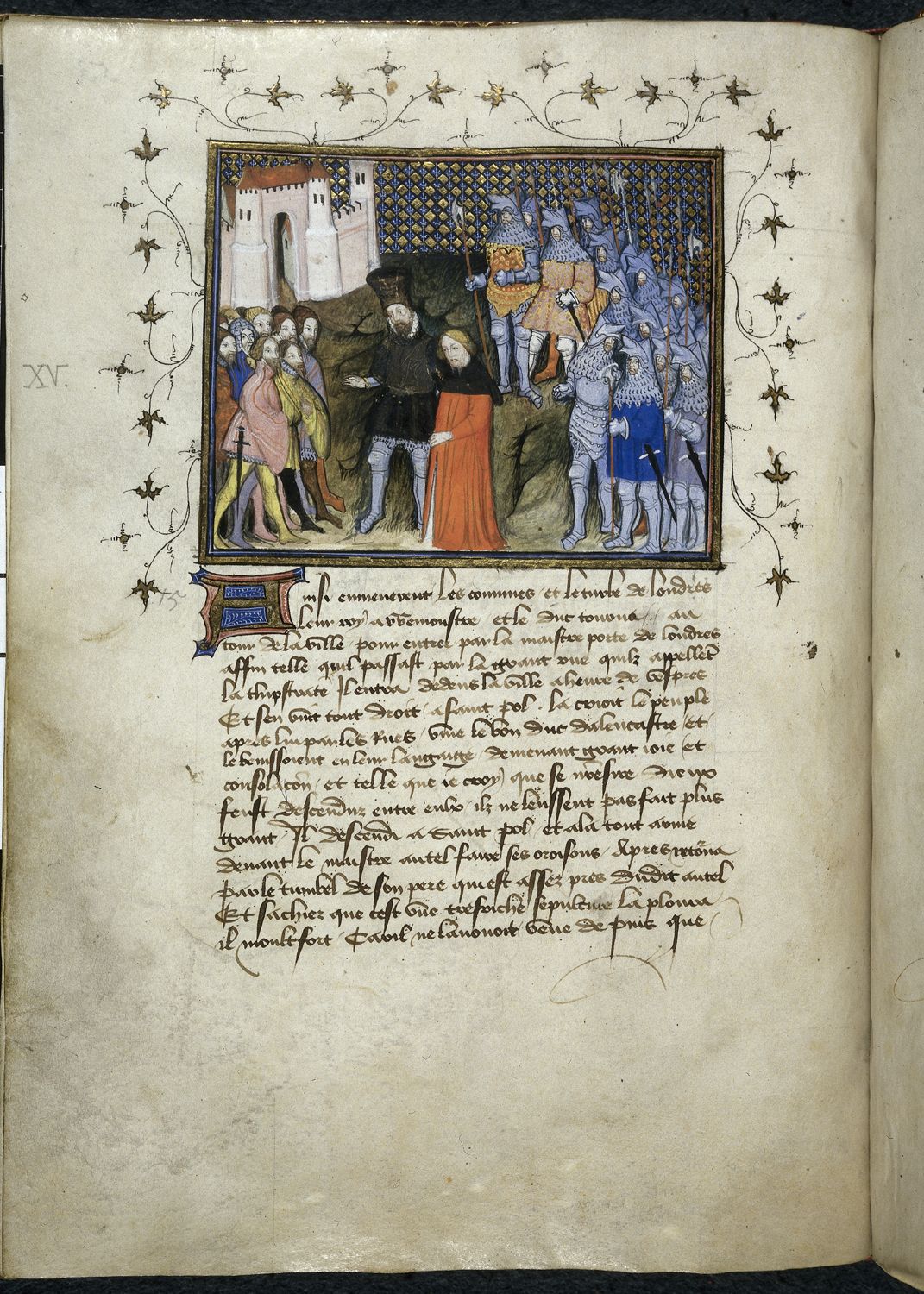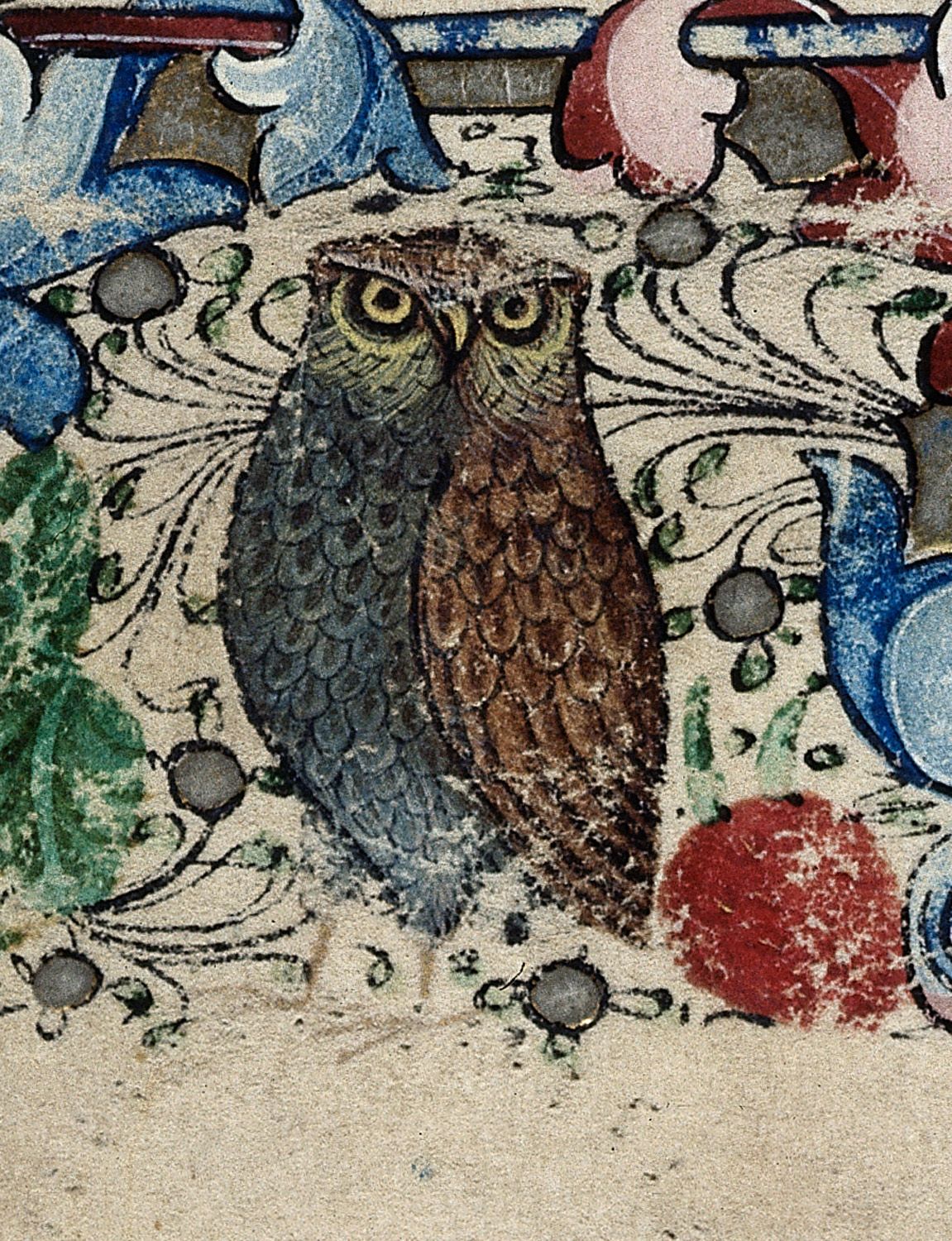
Today, owls are usually associated with wisdom. Their depictions in modern iconography range from majestic hunters to cute messengers à la Harry Potter. The convention of associating these nocturnal birds with wisdom goes all the way back to ancient Greeks and Romans depicting owls with the goddess of wisdom, Athena/Minerva. However, owl symbolism has not continuously had such positive connotations; in fact, in Medieval England, they were drastically different.
Owls have a strong presence in medieval fables and poems, many of them associating owls with the darkness and uncleanliness. Medieval poets took biblical references to owls as inspiration. For example, Job in his sorrow is referred to as the companion of owls, linking owls with mourning. In Leviticus, owls are mentioned as unclean birds. Building on these negative associations, medieval beast poems include violence towards owls. In Cuono of St. Nabor’s fable “The Peacock and the Owl,” a white peacock, symbolizing light and goodness, is violently murdered by an “envious owl” (Ziolkowski 245), and then a violent curse is wished upon the owl to avenge the death of the beautiful peacock. In the same vein, in the often-repeated story of the owlet in the hawk’s nest, the owl’s true identity is discovered when it fouls the nest—and then it is thrown out of the nest and dismembered by magpies and crows (Mann 178).
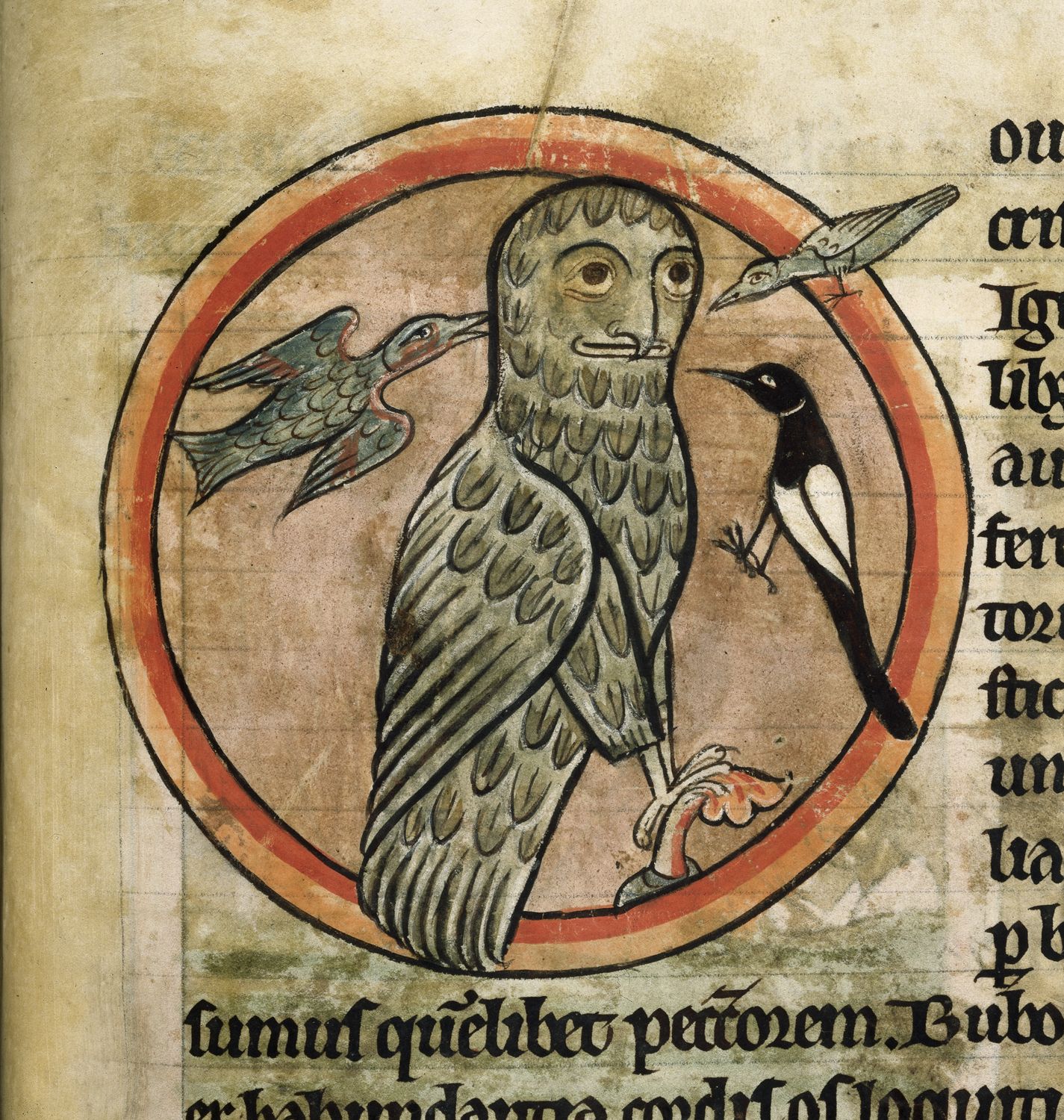
A more disturbing element of owl’s negative symbolism is their association with anti-Semitism. Owls, who are day-blind and live in darkness, were used to represent Jews in medieval England, who were said to have rejected the light of Christ and live in the uncleanliness of religious blasphemy. This accounts for the anthropomorphic appearance of some manuscript drawings of owls: they were sometimes given hooked noses to resemble Jews, and their horns represent the horned hats Jews were forced to wear.
Not all mentions of owls are completely negative, however. The Aberdeen bestiary presents a positive moralization of owls, saying that they represent Christ, who lived in the darkness (or away from view, like the owl) because he wanted to save sinners who also lived in darkness away from the light of God.
One of the most well-know medieval literary owls is in the poem The Owl and the Nightingale. The Owl and the Nightingale offer retellings of some of Marie de France’s fables, illustrating the popularity of animal fables. Significantly, the Nightingale recites the fable of the owl in the hawk’s nest to emphasize the inescapability of nature over nurture: the owl is recognized because it can’t escape its unclean nature despite being raised by a different bird. However, the poem gives the well-known story a twist, turning the usual moral condemnation of the owl on its head. The owl counters that it cannot be at fault for a nature that is common to all infants—even humans.
Owl symbolism continued to have negative associations even after the medieval period. During the Reformation, they came to be associated with Catholics, and later with Puritans (Hirsch 151)—generally with the vilified religious group du jour. Negative symbolism continued into the early modern period: in several of Shakespeare’s plays, the owl is an evil omen. Though the owl has much more positive connotations today, its history is plagued by darkness and negativity.
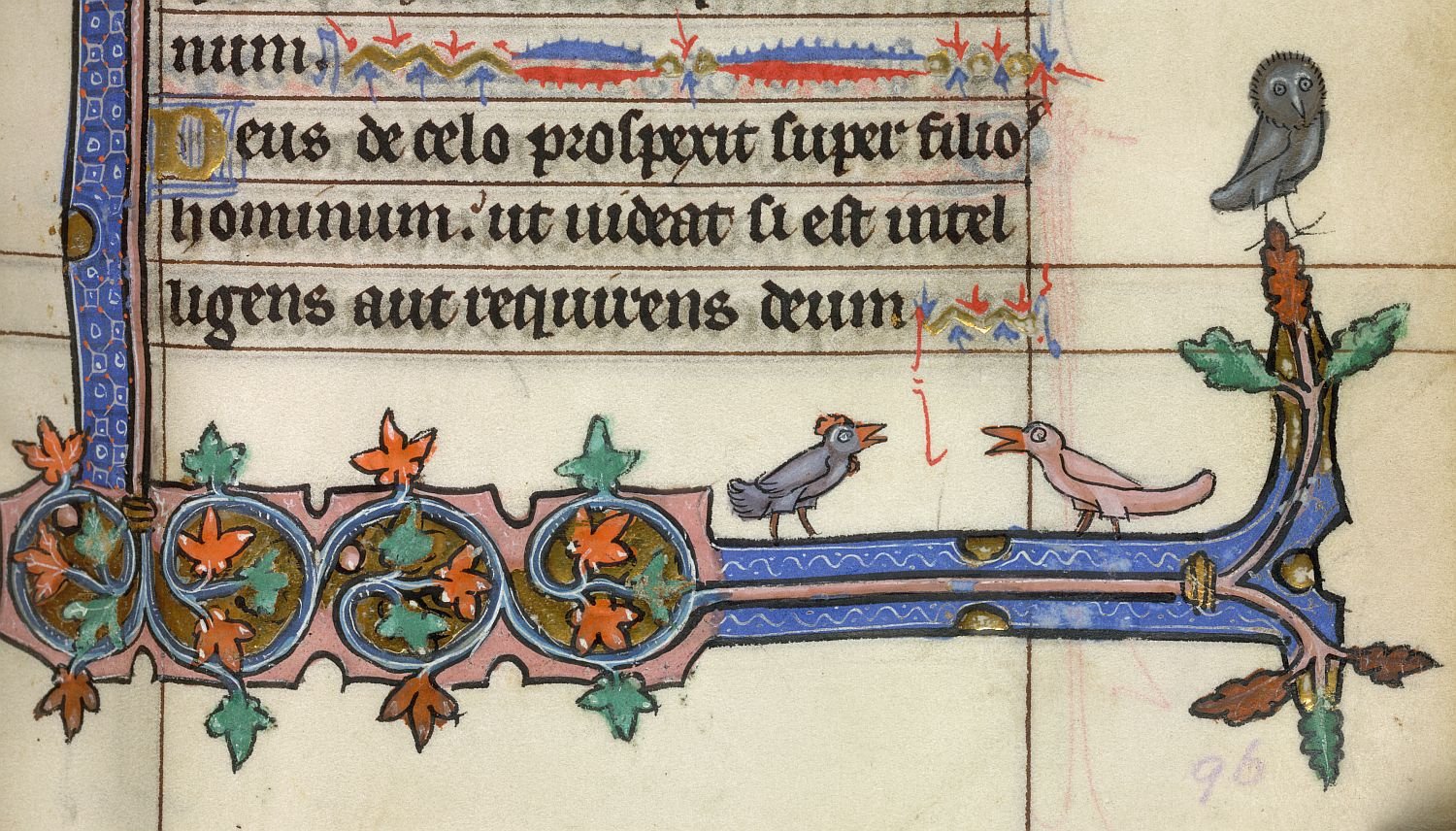
Anne Marie Blieszner
MA Candidate
Department of English
University of Notre Dame
Works Cited
Hirsch, Brett D. “From Jew to Puritan: The Emblematic Owl in Early English Culture.” “This Earthly Stage”: World and Stage in Late Medieval and Early Modern England. Brett Hirsch and Christopher Wortham, Eds. Turnhout, Belgium: Brepols, 2010.
Mann, Jill. From Aesop to Reynard: Beast Literature in Medieval Britain. Oxford: Oxford University Press, 2009.
Ziolkowski, Jan M. Talking Animals: Medieval Latin Beast Poetry, 750-1150. Philadelphia: University of Pennsylvania Press, 1993.

